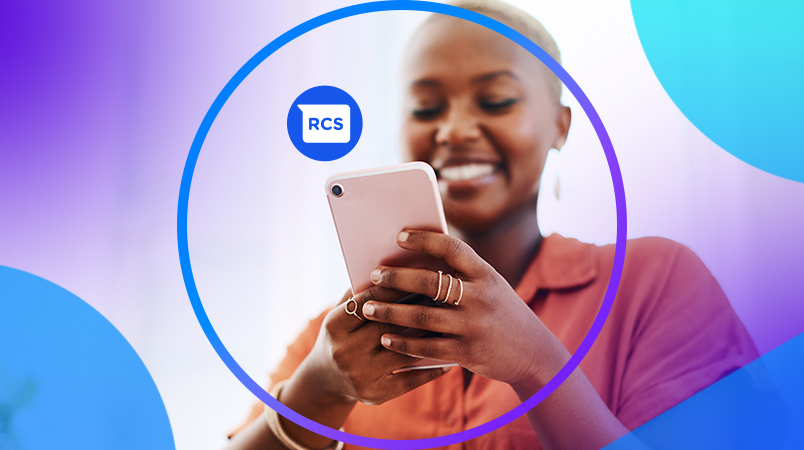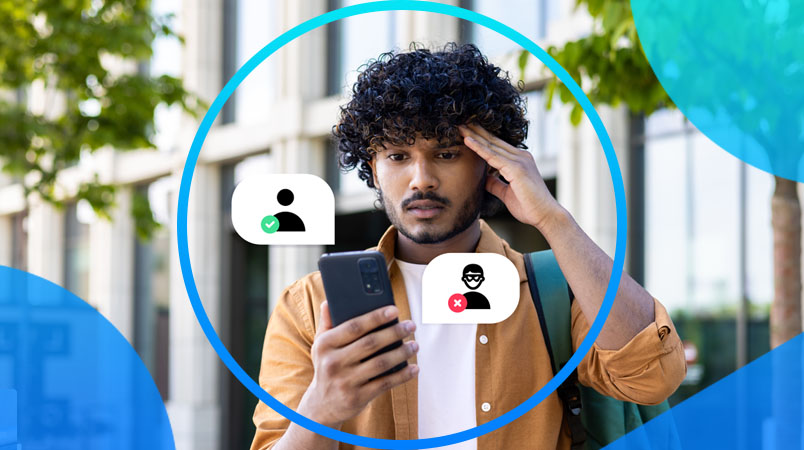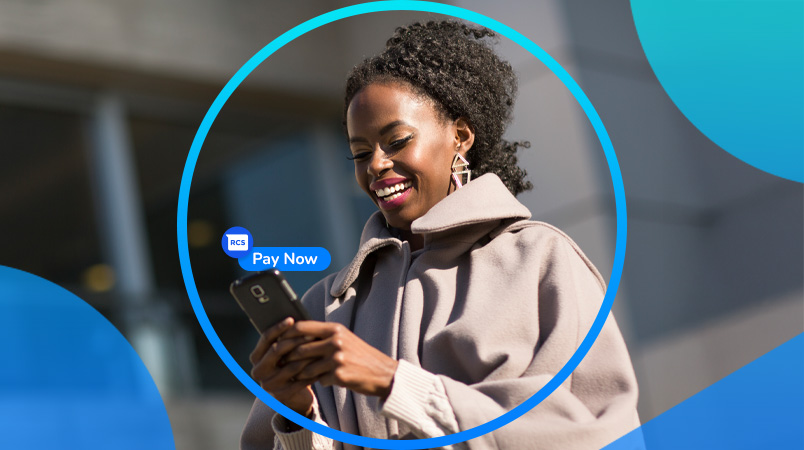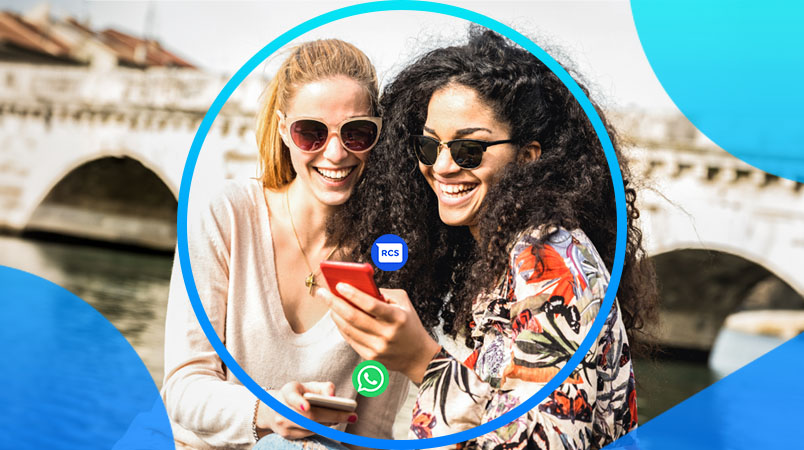Grabbing the attention of consumers during the season of sales is far from easy. You will have to compete to be visible, overcome high advertising costs, and meet escalating customer expectations to cut through the noise and drive conversion. Moreover, every touchpoint in the customer journey represents a make-or-break opportunity to form relationships and drive transactions, or risk losing a consumer’s interest and trust.
Engaging and Rich Messaging
For Black Friday, SMS and email have traditionally served as primary communication for customer engagement and while they remain relevant, there are more and more options out there that can provide your audience with a richer, more engaging experience. Your (potential) customers already gravitate to more modern messaging channels like WhatsApp and RCS because of the visual appeal that they offer.
WhatsApp Business Platform and RCS for Business both offer features valuable for business messaging during Black Friday, including:
(Verified) Business Profiles: Create a professional profile or page with details like a business name, address, branding, web links, and a short description to build brand awareness. To top it off, RCS always requires a verification of the sender profile, and Meta also offers the verified badge as a way to help build customer trust.
Quick Replies and Buttons: Set up quick replies or buttons to let the conversation flow smoothly and drive engagement. Statistics show that consumers are more likely to click a button compared to text links: Interaction rates are 15-20% higher when brands on WhatsApp use Quick Replies or CTA buttons instead of URLs.
Rich Media: Showcase products in the channel with images, videos, and GIFs or share product catalogs and carousels, allowing customers to browse and make inquiries directly in the conversation.
Integrations: Integrate with existing tools to enhance customer conversations, including eCommerce platforms, CRMs, OMS systems, or chatbots, allowing customers to receive relevant, up-to-date information.
The features above can truly give your sales a boost this Black Friday. Still in doubt? Check out the amazing benchmarks of WhatsApp and RCS, compared to the more traditional channels like email and SMS. 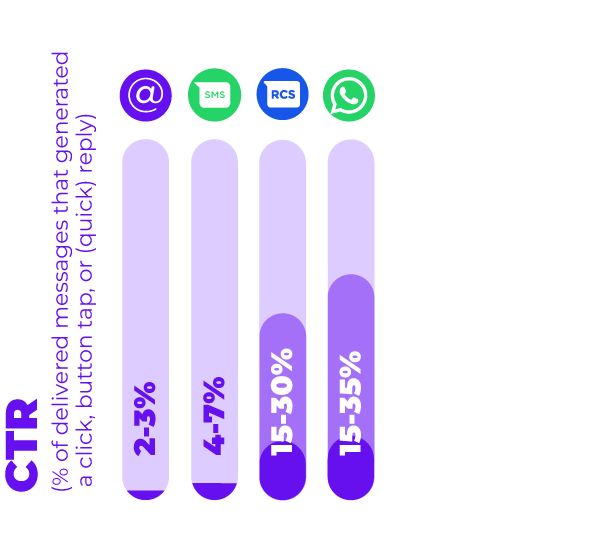 Where SMS sees 4–7%, RCS and WhatsApp campaigns drive 15–30/35% CTR (up to 51% for exceptional use cases). That’s up to 7× higher engagement, thanks to interactive features like carousels, quick replies, and embedded CTAs.
Where SMS sees 4–7%, RCS and WhatsApp campaigns drive 15–30/35% CTR (up to 51% for exceptional use cases). That’s up to 7× higher engagement, thanks to interactive features like carousels, quick replies, and embedded CTAs.
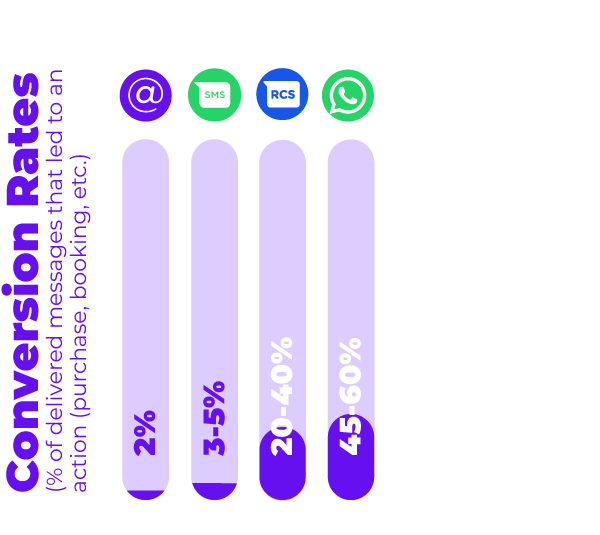 With 20–40% conversion rates for RCS, and 45-60% for WhatsApp, it's clear that these rich channels don't just drive engagement, they drive sales.
With 20–40% conversion rates for RCS, and 45-60% for WhatsApp, it's clear that these rich channels don't just drive engagement, they drive sales.
Convinced? Then let’s explore how you can leverage these rich multimedia channels across the entire customer journey, from pre-sales to purchase to post-purchase, supercharging your Black Friday sales.
Black Friday Business Messaging:
Convert the Conversation
1. Pre-Sales
Exclusive Pre-Sale Announcements
Announcing pre-sale promotions and special offers for your existing customers can create a sense of exclusivity and personalized treatment, making customers feel special and increasing the chances of early sales. Businesses can send loyal customers exclusive early access to deals, special discounts, and limited-time offers. Clothing retailers, for example, can send VIP customers coupons or QR codes on new season products, and offer them a sneak peek of Black Friday deals a day before the public.

Personalized Recommendations
Sharing personalized product recommendations based on customer preferences can engage consumers in the lead-up to Black Friday. Retailers can use images, videos, GIFs, or product carousels to send visual, media-rich customers personalized Black Friday deals or product recommendations based on past purchase history and browsing patterns. If a customer has previously purchased a smartphone from an electronics store, for example, they may receive a message about a unique Black Friday offer on accessories for their device.
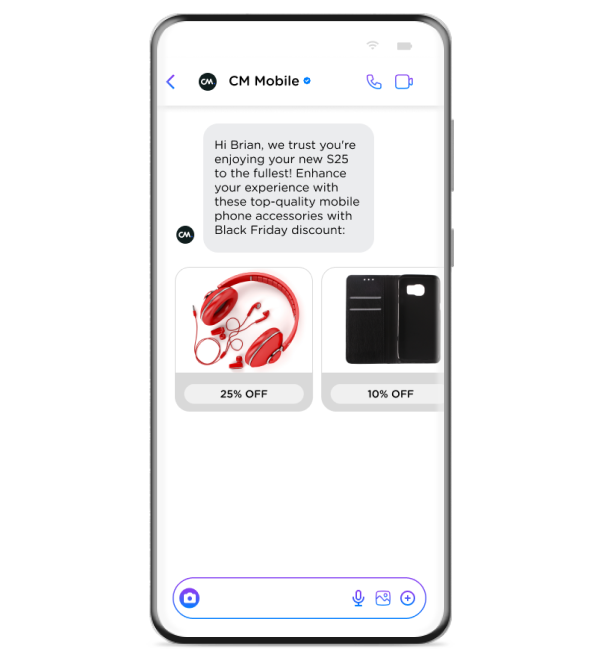
2. Purchase
Assisted Sales
Offering assisted sales during Black Friday can significantly enhance the shopping experience, drive more sales, and upsell existing customers. Businesses can set up dedicated support channels to answer queries, address concerns, and assist with orders in real-time. A beauty store, for example, can offer a helpline for customers to inquire about product availability and delivery schedules and resolve any issues they encounter while placing their Black Friday orders.
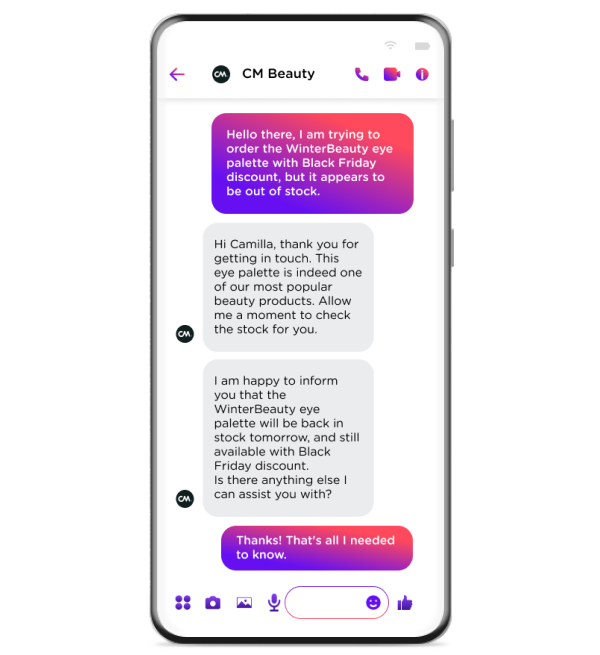
Abandoned Cart Recovery
Sending abandoned shopping cart reminders to customers who added items to their carts but didn't complete the purchase can reengage customers and recover lost sales. Retailers can offer incentives like additional discounts to encourage them to finalize their Black Friday orders. Booksellers, for example, can send a friendly reminder or simple nudge to customers who abandoned their carts, offering a 10% discount on the items they left behind.
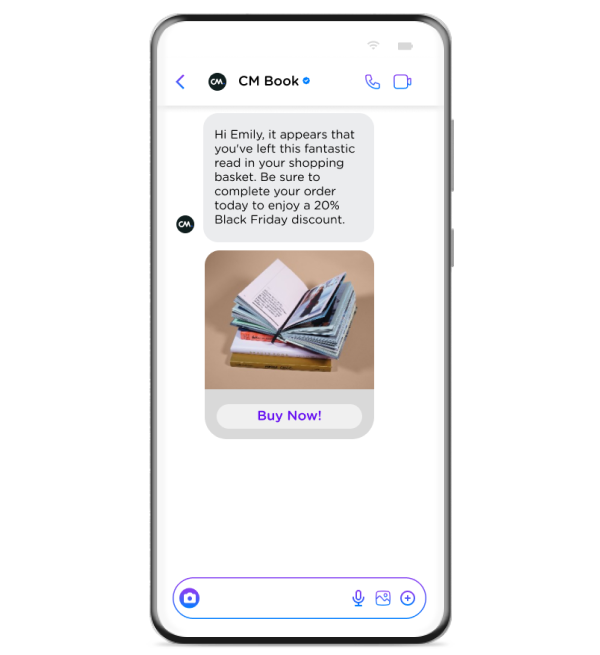
3. Post-Purchase
Customer Support
Providing always-on customer support and quick responses to customer queries can delight and retain customers. Businesses can provide live chat or chatbot support to respond to customers with relevant, timely information about Black Friday purchases. For example, if a customer has purchased an item from a health and supplement store, they may wish to return it; with a seamless return process, the customer is more likely to return.
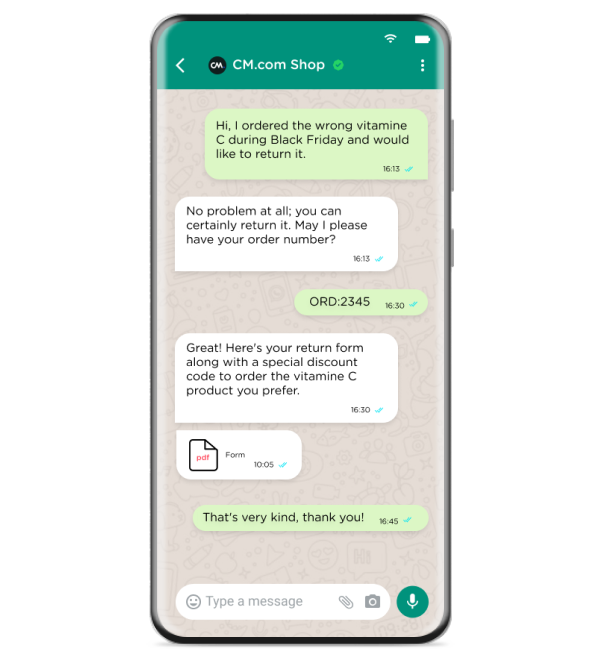
Tracking and Order Updates
Sharing tracking and order updates with customers post-purchase removes friction from the customer journey. Retailers can integrate channels with existing or third-party OMS systems to share proactive updates throughout the delivery process, reducing the need for customers to reach out to the support team directly. If a customer has ordered from a fitness store but wishes to track the order, businesses can share a tracking link for customers for live tracking.
![]()
Get Started With WhatsApp and RCS
WhatsApp and RCS are powerful business messaging channels to boost Black Friday sales. Leveraging the channels' rich media features and integrations means you can optimize customer engagement from pre-sales to purchase to post-purchase.


